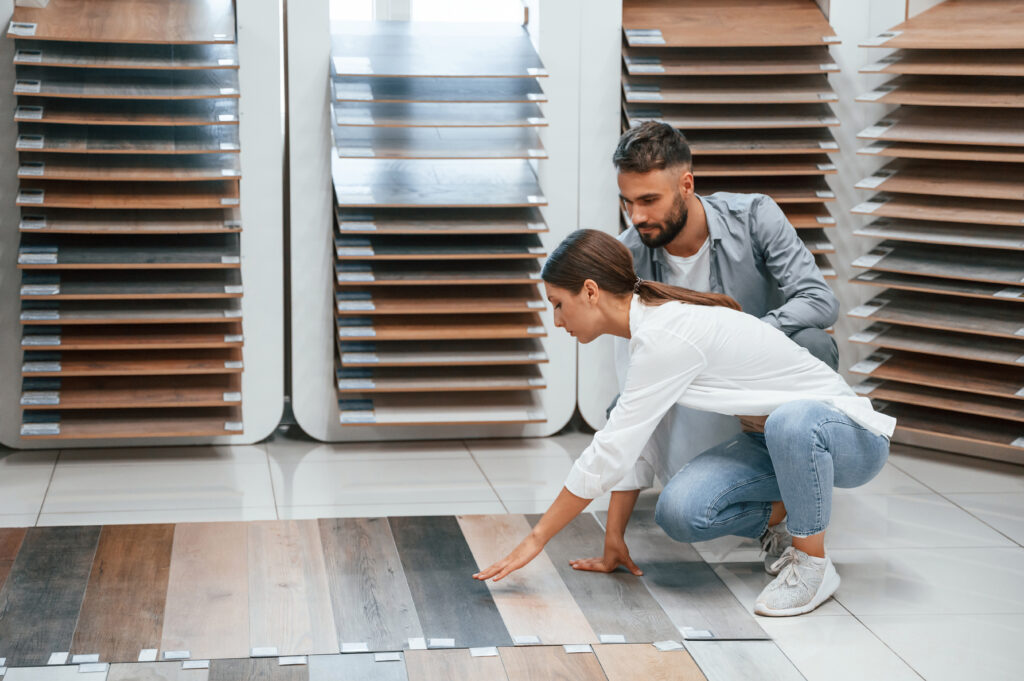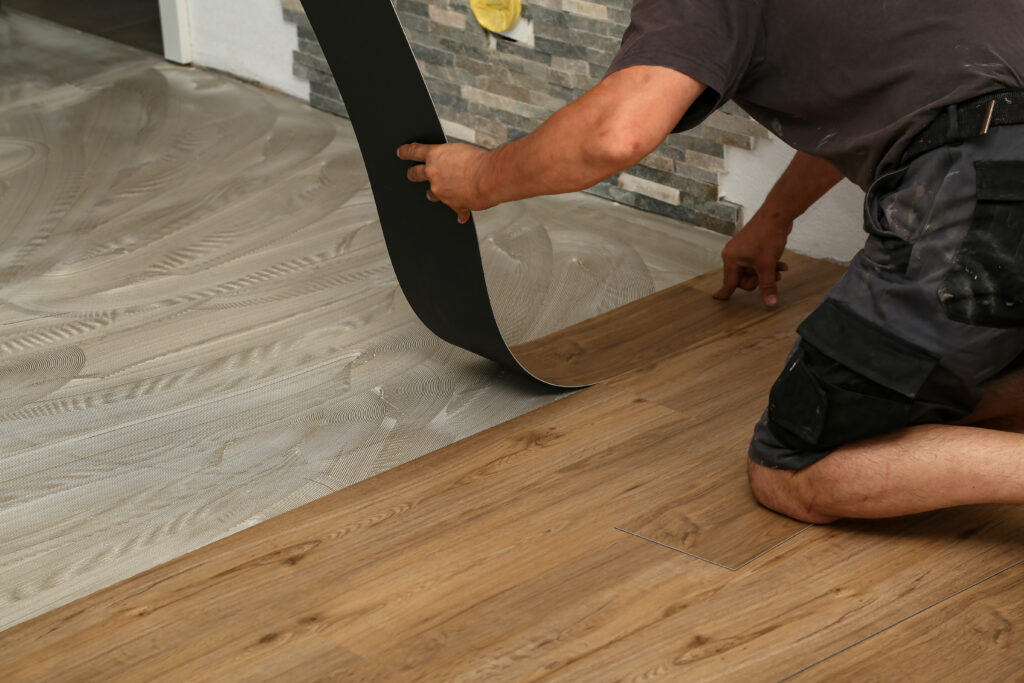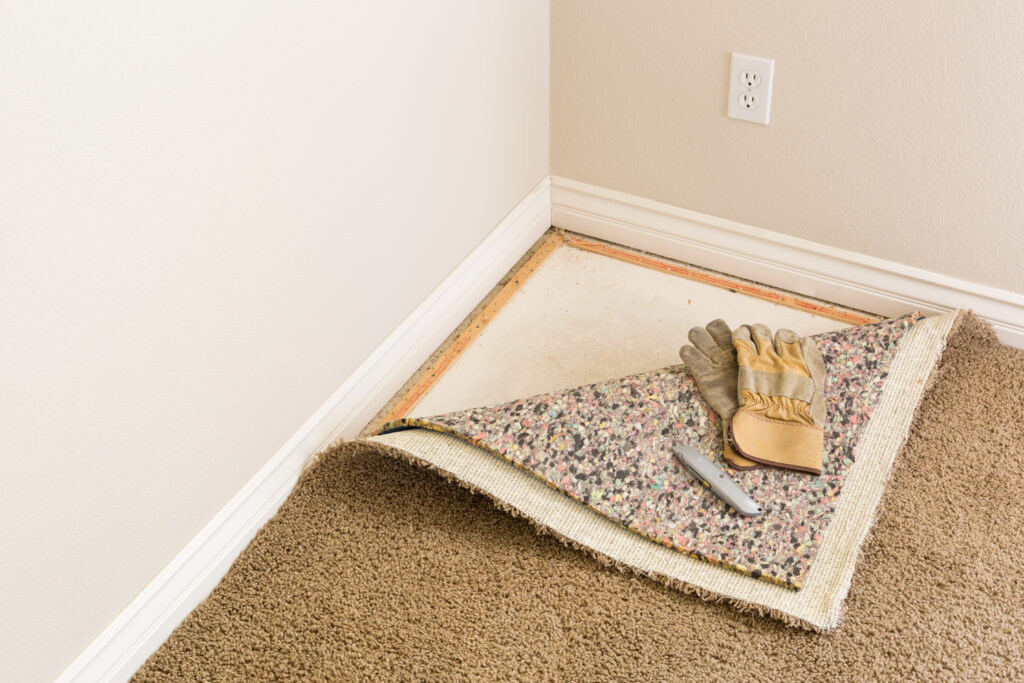
FACTORS TO CONSIDER WHEN CHOOSING FLOORING
Before selecting flooring, consider these key factors:
Foot Traffic: High-traffic areas need durable flooring, while low-traffic areas allow more flexibility.
Durability: Choose materials that withstand pets, kids, and heavy use.
Budget: Set a budget to narrow down your options.
Aesthetic Preferences: Choose flooring that complements your home’s style.
Maintenance: Consider how much time you're willing to spend on upkeep.
Environmental Impact: Eco-friendly options are available for sustainability.
FLOORING OPTIONS
Hardwood: Ideal for living rooms and hallways, offering timeless beauty and durability. Easy to clean but prone to scratches and moisture.
Carpet: Best for bedrooms and offices, providing warmth and comfort. Requires regular cleaning and maintenance.
Laminate: Great for living rooms and kitchens, offering a budget-friendly alternative to hardwood. It’s durable but can be damaged by moisture.
Luxury Vinyl Plank (LVP): Perfect for kitchens and bathrooms, water-resistant and durable. Easy to maintain but can fade with sunlight.

MAINTAINING YOUR LUXURY VINYL PLANK FLOORS
Regular Cleaning: Sweep or vacuum your LVP floors daily to remove dirt, dust, and debris, preventing scratches and buildup. Use a soft-bristled broom or vacuum with a hard floor setting to avoid damage. Avoid vacuums with beater bars or abrasive cleaning tools.
Damp Mopping: Damp mop your floors weekly to remove grime or sticky residues. Use a microfiber mop with a damp cloth and a mild vinyl cleaner or a mixture of warm water and dish soap. Avoid excessive water and harsh chemicals, which can damage the finish.
Address Spills Quickly: Clean spills immediately by blotting with a soft cloth or paper towel. For stubborn stains, use a mild vinyl cleaner or a vinegar solution (1 part vinegar to 10 parts water). Avoid harsh scrubbing and strong chemicals like bleach, which can discolor the surface.
Protect from Scratches and Damage: To avoid scratches, use felt pads or furniture sliders under furniture and rugs in high-traffic areas. Lift heavy furniture rather than dragging it. Avoid wearing high heels or placing sharp objects on the floor, as they can cause dents or punctures.
Sun Protection: While LVP is resistant to fading, prolonged sun exposure can cause color to fade, especially in lighter shades. Use blinds, shades, or curtains to reduce direct sunlight, and place rugs in sun-exposed areas. Avoid rubber-backed rugs, as they can cause discoloration over time.

CARPET VS. CARPET TILES: A QUICK COMPARISON
What is Carpet vs. Carpet Tiles?
Carpet: A continuous, wall-to-wall installation, soft, warm, and luxurious, but difficult to replace and expensive to install.
Carpet Tiles: Individual tiles that are easy to replace and DIY-friendly. They offer design flexibility but may have visible seams and be less soft.
Key Factors to Consider:
Installation: Carpet requires professional installation, while carpet tiles are easy to install yourself.
Durability & Maintenance: Carpet tiles are more durable, easier to clean, and can be replaced individually if damaged. Traditional carpet is harder to maintain and more expensive to repair.
Design Flexibility: Carpet tiles offer more design flexibility, as you can mix and match colors and patterns.
Comfort: Traditional carpet is softer and more comfortable underfoot, while carpet tiles may feel less plush.
Cost: Carpet tiles are more cost-effective, especially when considering installation costs.
Environmental Impact: Carpet tiles are often made from recycled materials and can be recycled, making them more eco-friendly.
Best Applications:
Carpet: Best for bedrooms, living rooms, and areas where comfort and aesthetics are important.
Carpet Tiles: Ideal for high-traffic areas, offices, and spaces where design flexibility and easy maintenance are needed.